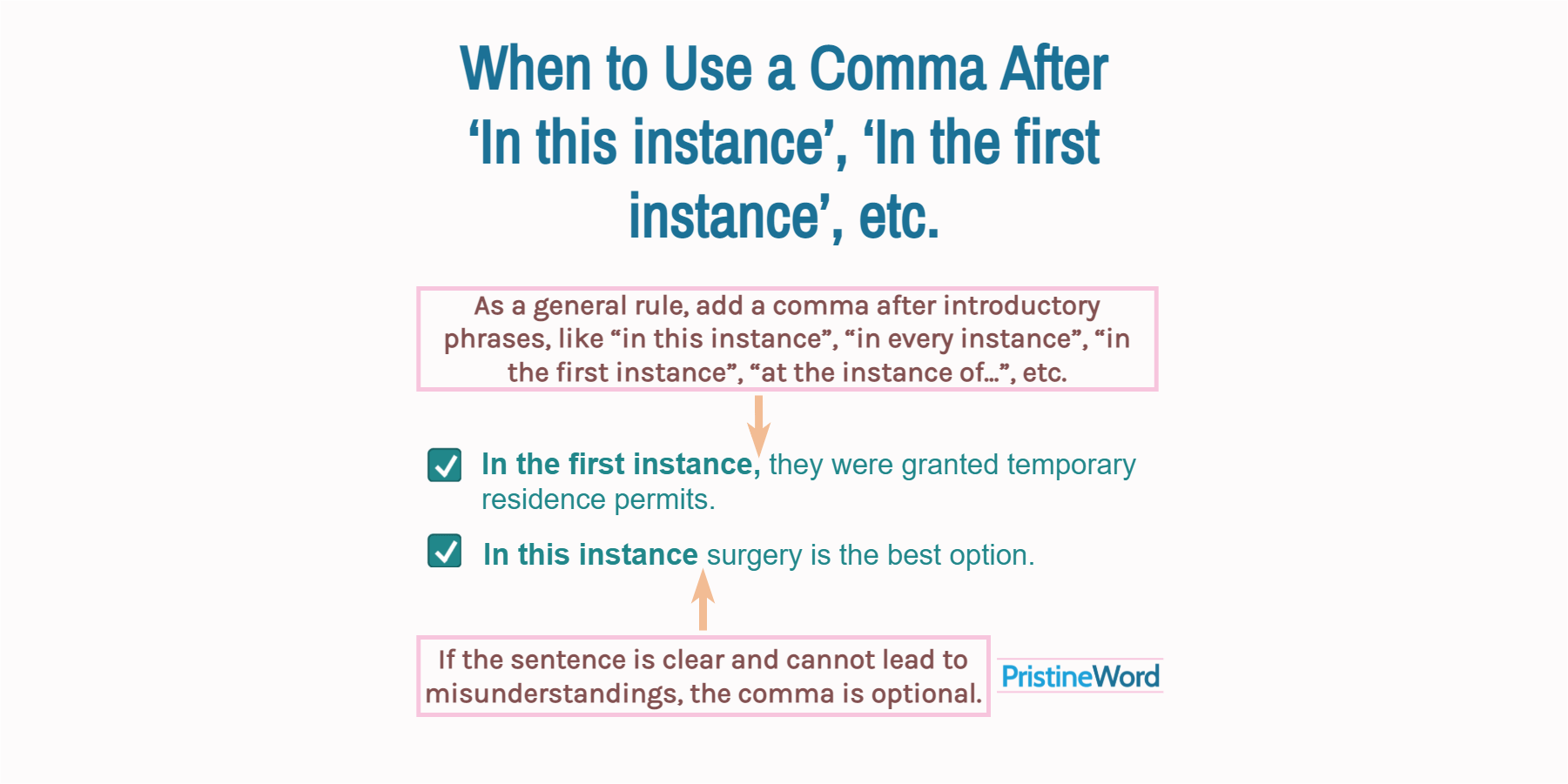As a general rule, add a comma after introductory phrases, like “in this instance”, “in every instance”, “in the first instance”, “at the instance of...”, etc.
As a general rule, add a comma after introductory phrases, like “in this instance”, “in every instance”, “in the first instance”, “at the instance of...”, etc.
In the first instance, they were granted temporary residence permits.
If the sentence is clear and cannot lead to misunderstandings, the comma is optional.
In this instance surgery is the best option.
In the middle or at the end of a sentence, we do not commonly need a comma to separate these expressions from the rest of the sentence.
I wouldn't say John was to blame in every instance.
Contents
1. Introducing a Sentence With ‘In this instance’, ‘In every instance’, etc.
At the beginning of a sentence, we usually add a comma after introductory phrases, such as “in this instance”, “in every instance”, “in the first instance”, “at the instance of...”, etc.
In the first instance, define your goals and identify your team members.
However, when starting a sentence with a prepositional phrase, the comma can be omitted in many situations.
In this instance the comma after the introductory phrase is optional.
But always add a comma when using a phrase to introduce a series of thoughts.
In the first instance, I am not interested; in the second place, I don’t have the time.
Use also a comma to clarify or avoid misreading when writing long or complicated sentences. In general, the longer the introductory phrase, the more likely you will use a comma after it.
At the instance of the landowners and a significant number of residents of the area, this legal department will provide a range of rental dispute resolution services.
When in doubt, use a comma after a prepositional phrase.
In this instance, the best option is surgery because it is safe and painless.
2. In the middle or at the end of a sentence
A comma before or after phrases like “in this instance”, “in every instance”, “in the first instance”, etc. is typically unnecessary in mid-sentence.
Their recommendations were accepted in every instance.
But always use a comma before and after "for instance" in the middle of a sentence.
There are other situations where commas may be needed; for example, place these adverbial prepositional phrases between commas to interrupt the sentence flow and/or create a parenthetical feel.
I wouldn’t say that Olivia is the only one to blame, in this instance, because we must all share the blame for this deplorable situation.

